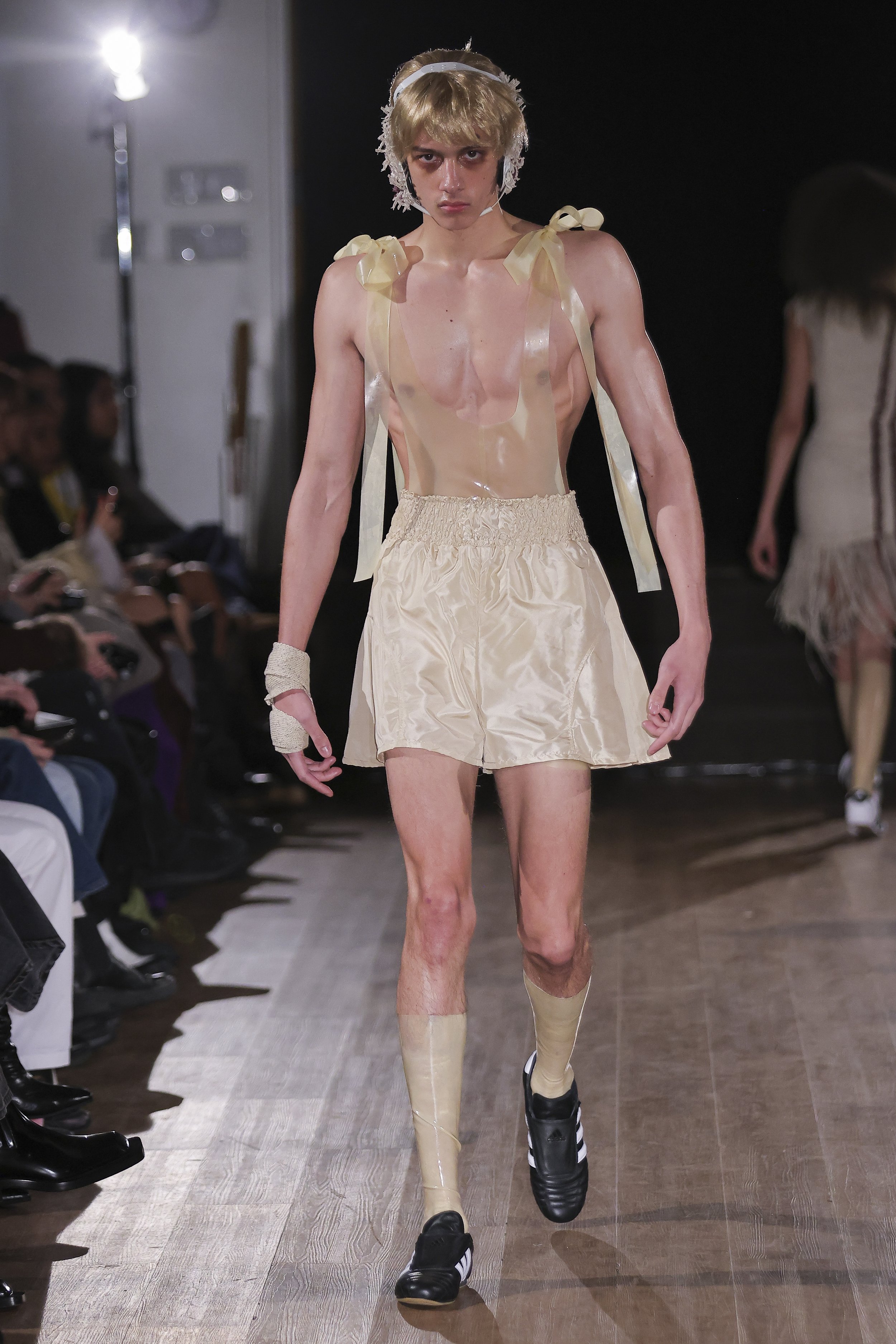text by Karly Quadros
It’s no secret Lisa Yuskavage has a bit of a fetish. If not a sexual one then certainly an artistic one. She’s best known for her paintings inspired by hippie dippie Penthouse porn featuring buxom white girls licking lollipops and lounging around in nothing but beaded panties and rainbow striped socks. For a long time, these girls occupied imaginary spaces like wild fields and technicolor dreamscapes, fantasy worlds where the body bounces and drips and nipples are always pointed to the heavens. But her latest show, 21 new large and small scale paintings on display now at David Zwirner in Los Angeles, has a new preoccupation: the artist’s studio.
The exhibition was inspired by, in part, an ongoing effort to archive every painting in Yuskavage’s more than forty year career. With the help of a few Zoomer assistants, Yuskavage has meticulously catalogued and cross referenced her paintings on her website, tagged with an exhaustive taxonomy of recurring motifs. Gallerist David Zwirner, moderating the artist’s talk back in the absence of curator Helen Molesworth, spoke about what initially drew him to Yuskavage’s paintings. “The work was always complicated,” he said. “The work always looked back at you.” Now Yuskavage is looking back at the work.
There is a looming reflexivity to the show. Consider Painter Painting (2024), in which the artist portrays herself clothed in a white lab coat at work in a studio bathed in the warm glow of a red light district. She’s dwarfed by her creation, a large-scale grisaille based on a 1995 black-and-white photograph that Yuskavage took of her sculpture titled “The Motherfucker” (today, the photograph lives in the MoMA.) The artist from the painting works from a reference photo taped to the wall while the original “Motherfucker” sculpture is tucked in the corner on a pedestal. In the studio, mediums and ideas echo and reflect off of each other, unbound by time.
Yuskavage is a contrarian at heart, and the real-life paintings referenced in the exhibition are often her most controversial. In the Company of Models (2024) features the artist’s iconic Rorschach Blot (1995), a rendering of a rubbery and gaping sex doll, leaning against a wall in a stack of canvases. Other paintings in the fictional artist studio feature the artist’s ‘Nel’zeh’ motif, little peasant women most prominently featured in the artist’s output in the 2010s, looking on disapprovingly like so many puritanical critics.
The previous paintings hidden in the new ones are often rendered in the thin lemony-yellow of a cadmium underpainting, the technique that gives Yuskavage’s paintings their distinctive candy-tinged glow. This layering, technically and thematically, animates the show. Expect Yuskavage’s many hallmarks – juicy color palates, rotund bellies, and perky breasts – but these are not her usual subjects. Instead, they’re models, memories, recurring ideas unearthed from the clutter, like a painting tenderly pulled from a stack in the attic.
In 2025, the shock of Yuskavage’s pliant sex kittens isn’t what it was in the mid-90s when she last exhibited in Los Angeles. After all, OnlyFans has gone mainstream and some contemporary fashion editorials make Penthouse seem all but quaint. Instead of a sexual guilelessness as her subject, Yuskavage has returned to a creative innocence: the artist in her studio, the student at her easel, and the model on her pedestal. For Yuskavage, the creative act is like a well-loved sexual fantasy – it’s a well she can return to again and again.
Lisa Yuskavage is on display through April 21 at David Zwirner in Los Angeles.














































































































































